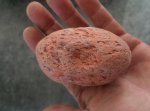jeanluc83
Omono
I have settled on a mix of pumice and 20-30% decomposed pine bark (sifted) for everything. Works great.
Same here. I use a product that is called dry stall. It is 100% pumice. The particle size is rather small but I have had good luck with it so far though.

